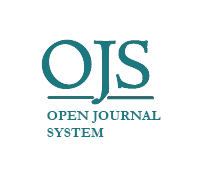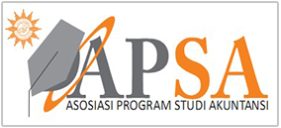Navigating Economic Uncertainty: Exploring The Impact Of Reduced Bank Credit On The Construction Industry
DOI:
https://doi.org/10.22219/jrak.v13i2.26557Keywords:
Credit, Industry, Crisis, Interest Rate, InflationAbstract
Purpose: This paper aims to analyze credit in the Indonesian banking construction sector empirically. Specifically, we examine whether economic conditions affect construction sector credit and how the response and diversity of construction sector credit in the face of economic shocks.
Methodology/approach: This article use monthly data on Indonesian banking credit from 2004 to 2022 using the Vector Error Correction Model (VECM).
Findings: The long-term effects of the economy on credit are shown by the results of the VECM research. The Impulse Response Function (IRF) results indicate that credit in the construction industry has both positive and negative effects. Forecast Error Variance Decomposition (FEVD) analysis shows that gross domestic product, crises, industrial price index, interest rates, exchange rates, and inflation affect credit diversity.
Practical implications: Banking credit is an essential component in meeting company needs. Banks need to consider several things in the distribution of credit to the construction sector, especially those that impact the long term.
Originality/value: This research provides a better understanding of how the construction sector credit can be affected by changing economic conditions, and how diverse credit responses and policies are in the face of such shocks.
Downloads
References
Adedokun, A. (2018). The Effects of Oil Shocks on Government Expenditures and Government Revenues Nexus in Nigeria (with Exogeneity Restrictions). Future Business Journal, 4(2), 219–232. https://doi.org/10.1016/j.fbj.2018.06.003
Alinsari, N., & Putri, L. D. (2022). Aspek Finansial Dan Aspek Kepemilikan Dalam Kinerja Keuangan Pada Perusahaan Manufaktur Sektor Industri Dasar Dan Kimia. Jurnal Akademi Akuntansi, 5(2), 256–270. https://doi.org/10.22219/jaa.v5i2.20593
Ashraf, B. N., Zheng, C., Jiang, C., & Qian, N. (2020). Capital Regulation, Deposit Insurance and Bank Risk: International Evidence from Normal and Crisis Periods. Research in International Business and Finance, 52, 1–37. https://doi.org/10.1016/j.ribaf.2020.101188
Benczúr, P., Karagiannis, S., & Kvedaras, V. (2019). Finance and Economic Growth: Financing Structure and Non-Linear Impact. Journal of Macroeconomics, 62, 1–49. https://doi.org/10.1016/j.jmacro.2018.08.001
Bian, X., Lin, Z., & Liu, Y. (2018). House Price, Loan-to-value Ratio and Credit Risk. Journal of Banking and Finance, 92, 1–12. https://doi.org/10.1016/j.jbankfin.2018.04.006
Byström, H. (2014). The Impact of Currency Movements on Asset Value Correlations. Journal of International Financial Markets, Institutions and Money, 31(1), 178–186. https://doi.org/10.1016/j.intfin.2014.03.014
Caporale, G. M., & Zekokh, T. (2019). Modelling Volatility of Cryptocurrencies Using Markov-Switching GARCH Models. Research in International Business and Finance, 48, 143–155. https://doi.org/10.1016/j.ribaf.2018.12.009
Carreras, O., Davis, E. P., & Piggott, R. (2018). Assessing Macroprudential Tools in OECD Countries Within a Cointegration Framework. Journal of Financial Stability, 37, 112–130. https://doi.org/10.1016/j.jfs.2018.04.004
Chadwick, M. G. (2018). Effectiveness of monetary and macroprudential shocks on consumer credit growth and volatility in Turkey. Central Bank Review, 18(2), 69–83. https://doi.org/10.1016/j.cbrev.2018.03.001
Chen, H. J., & Lin, K. T. (2016). How Do Banks Make The Trade-offs Among Risks? The Role of Corporate Governance. Journal of Banking and Finance, 72(5), S39–S69. https://doi.org/10.1016/j.jbankfin.2016.05.010
Chen, Y., He, M., & Rudkin, S. (2017). Understanding Chinese Provincial Real Estate Investment: A Global VAR Perspective. Economic Modelling, 67(20), 248–260. https://doi.org/10.1016/j.econmod.2016.12.019
Chu, L. K. (2020). Financial Structure and Economic Growth Nexus Revisited. Borsa Istanbul Review, 20(1), 24–36. https://doi.org/10.1016/j.bir.2019.08.003
da Silva, G. J. C., & Pirtouscheg, L. A. S. (2015). Basic Interest Rate, Bank Competition and Bank Spread in Personal Credit Operations in Brazil: A Theoretical and Empirical Analysis. EconomiA, 16(1), 32–45. https://doi.org/10.1016/j.econ.2014.12.001
David, S. A., Inácio Jr., C. M. C., & Machado, J. A. T. (2020). The Recovery of Global Stock Markets Indices After Impacts Due to Pandemics. Research in International Business and Finance, 55, 1–33. https://doi.org/10.1016/j.ribaf.2020.101335
Duican, E. R., & Pop, A. (2015). The Implications of Credit Activity on Economic Growth in Romania. Procedia Economics and Finance, 30(15), 195–201. https://doi.org/10.1016/s2212-5671(15)01286-1
Gazdar, K., & Cherif, M. (2015). Institutions and the Finance-growth Nexus: Empirical Evidence from MENA Countries. Borsa Istanbul Review, 15(3), 137–160. https://doi.org/10.1016/j.bir.2015.06.001
Ghenimi, A., Chaibi, H., & Omri, M. A. B. (2017). The Effects of Liquidity Risk and Credit Risk on Bank Stability: Evidence from the MENA Region. Borsa Istanbul Review, 17(4), 238–248. https://doi.org/10.1016/j.bir.2017.05.002
Gil-Alana, L. A., & Carcel, H. (2020). A Fractional Cointegration VAR Analysis of Exchange Rate Dynamics. North American Journal of Economics and Finance, 51, 1–9. https://doi.org/10.1016/j.najef.2018.09.006
Hakim, M. Z., & Apriliani, D. (2020). Effect of Profitability, Liquidity, Sales Growth, Business Risk, and Asset Structure on Capital Structure. Jurnal Akademi Akuntansi, 3(2), 224–243. https://doi.org/10.22219/jaa.v3i2.12115
Hermawan, Marzuki, P. F., Abduh, M., & Driejana, R. (2017). The Sustainable Infrastructure through the Construction Supply Chain Carbon Footprint Approach. Procedia Engineering, 171, 312–322. https://doi.org/10.1016/j.proeng.2017.01.339
Hossain, A. A. (2016). Inflationary Shocks and Real Output Growth in Nine Muslim-majority Countries: Implications for Islamic Banking and Finance. Journal of Asian Economics, 45, 56–73. https://doi.org/10.1016/j.asieco.2016.06.004
Jiménez, G., Mian, A., Peydró, J. L., & Saurina, J. (2020). The Real Effects of the Bank Lending Channel. Journal of Monetary Economics, 115, 162–179. https://doi.org/10.1016/j.jmoneco.2019.06.002
Kaur, P., & Singh, J. (2020). Price Formation in Indian Gold Market: Analysing the Role of Gold Exchange Traded Funds (ETFs) Against Spot and Futures Markets. IIMB Management Review, 32(1), 59–74. https://doi.org/10.1016/j.iimb.2019.07.017
Kavya, T. B., & Shijin, S. (2020). Economic Development, Financial Development, and Income Inequality Nexus. Borsa Istanbul Review, 20(1), 80–93. https://doi.org/10.1016/j.bir.2019.12.002
Khan, R. A., Liew, M. S., & Ghazali, Z. Bin. (2014). Malaysian Construction Sector and Malaysia Vision 2020: Developed Nation Status. Procedia - Social and Behavioral Sciences, 109, 507–513. https://doi.org/10.1016/j.sbspro.2013.12.498
Khmel, V., & Zhao, S. (2016). Arrangement of Financing for Highway Infrastructure Projects under the Conditions of Public-Private Partnership. IATSS Research, 39(2), 138–145. https://doi.org/10.1016/j.iatssr.2015.05.002
Kodongo, O., & Ojah, K. (2016). Does Infrastructure Really Explain Economic Growth in Sub-Saharan Africa? Review of Development Finance, 6(2), 105–125. https://doi.org/10.1016/j.rdf.2016.12.001
Le Goff, M., & Singh, R. J. (2014). Does Trade Reduce Poverty? A View from Africa. Journal of African Trade, 1(2), 1–26. https://doi.org/10.1016/j.joat.2014.06.001
Litsareva, E. (2017). Success Factors of Asia-Pacific Fast-Developing Regions’ Technological Innovation Development and Economic Growth. International Journal of Innovation Studies, 1(1), 72–88. https://doi.org/10.3724/sp.j.1440.101006
Louhichi, A., & Boujelbene, Y. (2016). Credit Risk, Managerial Behaviour and Macroeconomic Equilibrium within Dual Banking Systems: Interest-free vs. Interest-based Banking Industries. Research in International Business and Finance, 38, 104–121. https://doi.org/10.1016/j.ribaf.2016.03.014
Magud, N. E., & Vesperoni, E. R. (2015). Exchange Rate Flexibility and Credit During Capital Inflow Reversals: Purgatory . . . Not Paradise. Journal of International Money and Finance, 55, 88–110. https://doi.org/10.1016/j.jimonfin.2015.02.010
Marinho, E., Campelo, G., França, J., & Araujo, J. (2017). Impact of Infrastructure Expenses in Strategic Sectors for Brazilian Poverty. EconomiA, 18(2), 244–259. https://doi.org/10.1016/j.econ.2017.01.002
Medvedev, D. (2016). Social and Economic Development of Russia: Finding New Dynamics. Russian Journal of Economics, 2(4), 327–348. https://doi.org/10.1016/j.ruje.2016.11.001
Michail, N. A. (2020). World Economic Growth and Seaborne trade Volume: Quantifying the Relationship. Transportation Research Interdisciplinary Perspectives, 4, 1–8. https://doi.org/10.1016/j.trip.2020.100108
Musarat, M. A., Alaloul, W. S., & Liew, M. S. (2020). Impact of Inflation Rate on Construction Projects Budget: A Review. Ain Shams Engineering Journal, 1–8. https://doi.org/10.1016/j.asej.2020.04.009
Muye, I. M., & Muye, I. Y. (2017). Testing for Causality Among Globalization, Institution and Financial Development: Further Evidence from Three Economic Blocs. Borsa Istanbul Review, 17(2), 117–132. https://doi.org/10.1016/j.bir.2016.10.001
Nahar, S., & Sarker, N. (2016). Are Macroeconomic Factors Substantially Influential For Islamic Bank Financing? Cross-Country Evidence. IOSR Journal of Business and Management, 18(6), 2319–7668. https://doi.org/10.9790/487X-1806012027
Ozili, P. K. (2018). Impact of Digital Finance on Financial Inclusion and Stability. Borsa Istanbul Review, 18(4), 329–340. https://doi.org/10.1016/j.bir.2017.12.003
Rothenberg, A., Gaduh, A., Burger, N., Chazali, C., Tjandraningsih, I., Radikun, R., Sutera, C., & Weilant, S. (2016). Rethinking Indonesia’s Informal Sector. World Development, 80, 96–113. https://doi.org/10.1016/j.worlddev.2015.11.005
Salman, A., & Nawaz, H. (2018). Islamic Financial System and Conventional Banking: A Comparison. Arab Economic and Business Journal, 13(2), 155–167. https://doi.org/10.1016/j.aebj.2018.09.003
Salmanzadeh-Meydani, N., & Ghomi, F. (2019). The Causal Relationship Among Electricity Consumption, Economic Growth and Capital Stock in Iran. Journal of Policy Modeling, 41(6), 1230–1256. https://doi.org/10.1016/j.jpolmod.2019.05.003
Sarkis, N., & Daou, L. (2013). Giving Back to the Community, an Obligation or an Option Today?—Case of the Educational Sector in Lebanon. International Strategic Management Review, 1(2), 59–64. https://doi.org/10.1016/j.ism.2013.09.001
Setiawan, H., Erdogan, B., & Ogunlana, S. O. (2015). Proactiveness of contractors: A study of Indonesia. Procedia Engineering, 125, 60–67. https://doi.org/10.1016/j.proeng.2015.11.010
Singh, A., & Singh, M. (2016). Inter-linkages and Causal Relationships between US and BRIC Equity Markets: An Empirical Investigation. Arab Economic and Business Journal, 11(2), 115–145. https://doi.org/10.1016/j.aebj.2016.10.003
Stasiak-Betlejewska, R., & Potkány, M. (2015). Construction Costs Analysis and its Importance to the Economy. Procedia Economics and Finance, 34(15), 35–42. https://doi.org/10.1016/s2212-5671(15)01598-1
Tayssir, O., & Feryel, O. (2018). Does Central Banking Promote Financial Development? Borsa Istanbul Review, 18(1), 52–75. https://doi.org/10.1016/j.bir.2017.09.001
Were, M., & Wambua, J. (2014). What Factors Drive Interest Rate Spread of Commercial Banks? Empirical Evidence from Kenya. Review of Development Finance, 4(2), 73–82. https://doi.org/10.1016/j.rdf.2014.05.005
Yin, L., & Ma, X. (2018). Causality Between Oil Shocks and Exchange Rate: A Bayesian, graph-based VAR Approach. Physica A: Statistical Mechanics and Its Applications, 508, 434–453. https://doi.org/10.1016/j.physa.2018.05.064
Downloads
Published
Issue
Section
License
Copyright (c) 2023 Faizul Mubarok, Arie Wibowo Khurniawan, Irmawaty Irmawaty

This work is licensed under a Creative Commons Attribution-NonCommercial-ShareAlike 4.0 International License.

Jurnal Reviu Akuntansi dan Keuangan is licensed under a Creative Commons Attribution-NonCommercial-ShareAlike 4.0 International License.
Authors who publish with this journal agree to the following terms:
- Authors retain copyright and grant the journal right of first publication with the work simultaneously licensed under a Creative Commons Attribution-NonCommercial-ShareAlike 4.0 International License that allows others to share the work with an acknowledgement of the work's authorship and initial publication in this journal.
- Authors are able to enter into separate, additional contractual arrangements for the non-exclusive distribution of the journal's published version of the work (e.g., post it to an institutional repository or publish it in a book), with an acknowledgement of its initial publication in this journal.
- Authors are permitted and encouraged to post their work online (e.g., in institutional repositories or on their website) prior to and during the submission process, as it can lead to productive exchanges, as well as earlier and greater citation of published work (See The Effect of Open Access).










